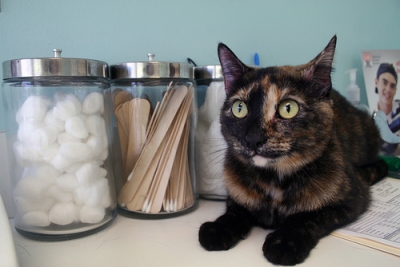Black Widow Spiders are notorious for their potent venom which is 15 times stronger than that of a rattlesnake. Contrary to popular belief, not all species of Black Widow females consume their mates after mating. Male Black Widows are much smaller than the females and their venom is much less harmful.
The Black Widow usually feeds on flies, mosquitoes, grasshoppers, beetles and caterpillars. Some species can consume reptiles and small mammals.
Researchers believe that the venom of the female Black Widows’ bite, high in the poison alpha-latrotoxin, takes over the nervous system of the prey and is capable of killing a human. Since most of our pets are smaller than we are, they are at much greater risk from a bite.
Shy in nature, the Black Widow usually backs away from confrontations. Since it takes time and energy to replace venom, the spiders are choosy about when to use this defense.
While the bites of Black Widows are rarely fatal to humans, they can be deadly for our pets.
Symptoms of a bite can be restlessness, muscle tremors, pain and cramping, rigid painful abdomen, excessive drooling, increase in blood pressure and heart rate, vomiting, diarrhea, loss of coordination, inability to stand, paralysis.
If your pet shows any of these signs or you’ve seen a black widow and suspect s/he has been bitten, contact your vet or emergency animal clinic immediately. Your pet will probably have to be hospitalized to receive care.
Treatment may include oxygen to help breathing, intravenous fluids, muscle relaxants, painkillers and other supportive care and constant monitoring.
Diagnosis of a Black Widow bite can be difficult as symptoms mirror many problems. Your vet will use blood tests, urinalysis and a thorough physical examination searching for the location of the bite.
Prognosis can be uncertain for days after treatment as symptoms can remain for months. Black Widow bites are usually fatal to cats and can be to some dogs.
Black Widow spider females are shiny black and have a red mark shaped like an hourglass on the abdomen. Be sure to tell your vet if you’ve seen this spider where your pet has been walking.



